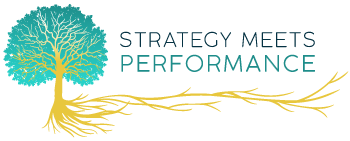By Dr. Sherry Nooravi [Part 5 of 6]
Just as San Diego’s Most Admired CEOs* (as identified by the San Diego Business Journal) are intentional about their culture, inspiring and engaging their teams and taking risk, they also have philosophies about innovation and specific ways they seek it out and execute it. Two of the CEOs, Jim Cable of Peregrine Semiconductor Corporation and Gary Rayner, former CEO of LifeProof, believe innovation emerges when you have the appropriate philosophies and systems in place.
“In big companies, you are punished if you fail, but not necessarily rewarded if you succeed,” Cable said. “You may get an ‘atta boy,’ but if you’re wrong, you are punished. Why would anyone take that chance? If you set that up as the system, how are you going to get innovation? That’s what start-ups should be doing: taking risks. Start-ups serve a very important function in business today.”
Rayner has a similar philosophy about how companies can reward or punish innovation. “A lot of companies punish failure and give weak rewards for success, for example, $5,000 for reward and you’re fired if you fail,” he said. “Why would anyone innovate? I’d rather you try and fail then not try at all.”
Once you’ve determined that being open to new ideas and innovation is a value you want in your organization, it’s critical to create structures to support these philosophies. San Diego’s Most Admired CEOs do this in four ways.
Hire for Creativity
Greg Koch, CEO or Stone Brewing Company said they have a tendency to hire creative people and free thinkers and they want to help give them confidence to push for things. “It is a constant challenge to convey to people that the way they think it should be done is the way it should be done,” he said. “Whether you’re a server or working on production, you can have a voice inside that says, ‘I don’t have credibility, they don’t care, I said something once and it didn’t go anywhere.’ Any entrepreneur knows you’ve got to say it 43 times.”
Create Open Forums
Gary Cady, CEO of Torrey Pines Bank notes that they have a collaborative organization. “If someone comes up with an idea, it’s vetted and discussed,” he said. “Just that nurturing communication helps. We have a no-holds-barred planning retreat and have positive and nurturing forums.”
Koch explained how Stone Brewing Company keeps the lines of communication open. “We have On Tap with Steve and Greg every six weeks where we sit down with 10 randomly selected employees from different departments, pour a new release and talk about what’s on people’s minds. It has lead to solid, positive stuff.”
Walk the Talk
Cable is proud to showcase the wall that displays plaques of the company’s patents, many of which have his name on them.
“I personally and my senior members walk the talk,” he said. “I still stay technical and write patents and I challenge my team on it. We have monthly business reviews. We talk about new products; it’s always front and center. If you are in a high-tech company, the psyche of engineers is important. They really want to work for people they respect and they respect technical capability. The fact that you stay current and can have those kinds of conversations is important.”
Get Connected
Bob Kelly, CEO of the San Diego Foundation has a strong belief in the importance of staying connected with the community and said he asks his staff questions all the time, including why their phones aren’t ringing off the hook. “I ask them, are we the Apple store or Microsoft store? What is our value to our customers?”
Tim Caulfield, former CEO of American Internet Services said they want to push the edge on cloud computing and they do so by getting involved outside the company with organizations like CommNexus.
Creating the Structure to Seek Innovation in Your Company
Here are some questions to ask yourself:
- What were the last three good ideas that came my way and what did I do about them?
- How do I get ideas from my staff?
- What am I doing to incentivize innovation in our company?
- Does our interview process help us seek creative people?
- What am I doing that demonstrates innovation, creativity and risk-taking?
- Does our company reach out to the community for collaborative efforts that will increase our ideas for doing things differently?
*Welcome to the CEO Corner, a special series featuring the best practices of San Diego’s Most Admired CEOs. The research articles are based on the themes that emerged from the in-depth interviews Dr. Sherry Nooravi conducted with the nine winners of San Diego’s Most Admired CEO Awards (as identified by the San Diego Business Journal). Several of the CEOs interviewed have moved on from their companies, continuing their leadership elsewhere. These CEOs are Larry Anderson of Tri-City Hospital, Tim Caulfied of American Internet Services and Gary Rayner of LifeProof.




